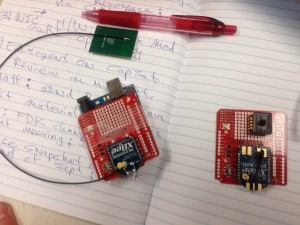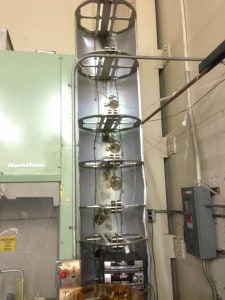
NASA’s Ames Research Center is putting the first ZigBee radio network into space! XBee radios will form a prototype telemetry system on a NASA Soarex sounding rocket launching this coming January, 2015.
The NASA sounding rocket will journey into space around 200 miles above the earth, run experiments and then return ballistically into the Atlantic Ocean. The on-spacecraft ZigBee network will be used to monitor a new parachute-like exo-brake that will be deployed for testing hypersonic braking in the thin upper-atmosphere. Exo-brakes are being tested for returning samples from Earth orbit, and for slowing landers on other planets like Mars where the atmosphere is much thinner than Earth’s.

A three-node XBee ZigBee network will be used to monitor the exo-brake performance so that no wires need to be added to the device. The nodes will monitor six different acceleration parameters as well as overall temperature and air pressure. Future wireless networks may be used to monitoring the spacecraft structure itself. This network can also be made available to other experiments on the same flight to route their telemetry to an Iridium radio that transmits all the data via satellite back to Earth. This last link is essential because the sounding rocket will not be recovered intact. Like Laika the Soviet Space Dog, NASA’s XBees are taking a one way trip for the benefit of science.
Wireless networks on spacecraft are a new idea. Traditionally all onboard connections use physical cabling. This adds weight, complexity and the need for extra fuel. Because aerospace is a necessarily conservative endeavor, new technologies are typically introduced slowly. Therefore rather than just taking everything wireless all at once, ZigBee is being tested first on missions where the higher risk of new tech is acceptable. After successful trials the systems should be proven enough to go into a hardening process before being incorporated into more critical projects where risks must be kept to a minimum.

Modern NASA programs are mandated to avoid the expense of creating custom hardware when viable alternatives are available commercially. Experimental systems like wireless networks for spacecraft are also started on shoestring budgets, often assisted by student engineers. Therefore everything on this ZigBee project is being prototyped using off-the-shelf maker components such as Arduino boards, adapter shields from SparkFun Electronics and XBee ZB radio modules from Digi International. XBee was selected because it is easy to incorporate with Arduino, well-documented and readily commercially available.

The system is being designed with a little help from my Building Wireless Sensor Networks book, and a lot of expertise from the NASA team. If this first test goes well, the next version will be more customized and could include the Programmable XBee or even the XBee Plus Arduino board that I’ve been prototyping over the last few months.
The project team at NASA includes Richard Alena and Thom Stone, who have written papers including “Fault tolerance in ZigBee networks” and “ZigBee – A Smart, Viable, Wireless Architecture for Spacecraft Avionics.”
Here’s video from a prior launch of the Soarex rocket that will carry XBee radios where no XBee has gone before:

Pingback: Faludi Speaks on Embedded.fm « Rob Faludi